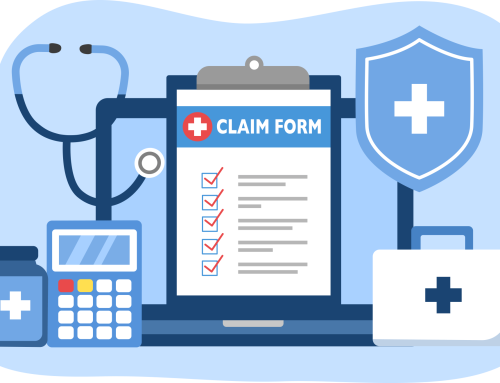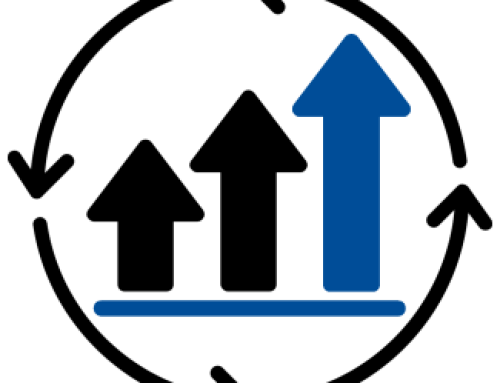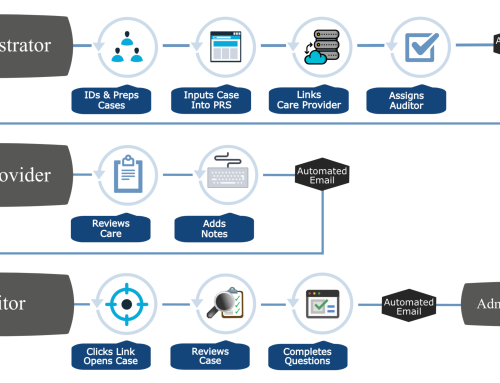 This week and in separate press releases, Anthem and OptumRx announced significant improvements through their opioid programs. These successes mark new options for the battle in, what the President declared, the opioid “national emergency”. The following are important points from their separate announcements.
This week and in separate press releases, Anthem and OptumRx announced significant improvements through their opioid programs. These successes mark new options for the battle in, what the President declared, the opioid “national emergency”. The following are important points from their separate announcements.
Anthem O
Anthem’s affiliated health plans just reached the company’s collective goal of reducing prescribed opioids filled at pharmacies by 30 percent during the past five years.
The health plans were some of the first to limit coverage for short-acting opioid coverage to seven days for all individual, employer-sponsored and Medicaid members beginning new opioid prescriptions. The policy does not apply to those who have cancer or sickle cell anemia or those who are receiving palliative care.
The goal was originally expected to be achieved by 2019. The primary reason for the quantity limits was to prevent accidental addiction and opioid use disorder, and to ensure clinically appropriate use consistent with Centers for Disease Control guidelines.
“Anthem believes all insurers have a responsibility to do what we can to address this health epidemic, and we are committed to making a significant difference to our health plan members,” said Dr. Sherry Dubester, Anthem vice president of behavioral health, who leads the companywide effort to impact the opioid epidemic.
“We believe these changes in pharmacy policy, complemented by a broad set of strategies addressing the opioid epidemic, will help prevent, reduce and more effectively treat opioid use disorder among our members.”
Anthem affiliated health plans took the following steps designed to help ensure clinically appropriate use of opioids and to proactively prevent the development of opioid use disorder:
- For short-acting opioids, initial prescriptions are limited to seven days. Members can only receive a maximum 14 days’ supply for short-acting opioids in a 30-day period without additional authorization, consistent with CDC guidelines. The Anthem quantity limit changes began rolling out in October 2016, for individual short-acting opioids, with the limit on the most popular drug, hydrocodone-acetaminophen, taking effect in July.
- For all long-acting opioids, prior authorization was put into place in September 2016, for initiation of therapy. Quantity limits for long-acting opioids have existed for many years, with exceptions for those who have terminal or chronic illness.
- Pharmacy Home programs exist for individual, employer-sponsored, Medicare and Medicaid members that can assign members to one pharmacy and/or one provider for their opioid prescriptions. The program allows doctors to better monitor access of opioids and helps ensure members are receiving counseling and mental health support.
- Providers who receive member electronic dashboards are notified when a member is at greater risk for developing opioid use disorder – such as prescriptions from several providers or pharmacies, or when the member has prescriptions for opioids, muscle relaxants and benzodiazepines at the same time.
- Providers are alerted of additional controlled substance use concerns and associated emergency room or urgent care use through a letter, including when the member has prescriptions for both Suboxone and opioids or is on persistent high doses of opioids.
To set its 2019 pharmacy goal, Anthem considered the number of opioids prescribed, as well as their dosing, to research morphine equivalents dispensed from 2012, the peak year for opioid prescription fills. Since then, Anthem’s policies have contributed to a reduction of 31 percent and Anthem has updated its goal to achieve a 35 percent reduction by 2019.
The pharmacy policy changes are part of Anthem’s holistic approach to prevention, treatment and deterrence to reduce the impact of this epidemic.
OptumRx O
OptumRx today announced the initial results of its Opioid Risk Management program, which is reducing opioid consumption and prescribing and will be rolled out nationwide to build on its early success.
The Opioid Risk Management program identifies the most significant points in the prescribing, dispensing and consuming process for intervention and education to reduce inappropriate use and increase alignment with Centers of Disease Control (CDC) guidelines. The program also places maximum fill limits on opioid therapy, whether the patient is new to opioids or a chronic user.
Since launching the program with more than 400 clients on July 1, these point-of-service interventions have delivered the following improvements:
- 82 percent decrease in prescriptions above the CDC guideline recommended dose of 50mg morphine equivalent dose (MED) per day for first-fill acute prescriptions;
- 65 percent decrease in prescriptions for first-fill acute opioid treatment written above the maximum 7-day supply;
- 68 percent decrease in prescriptions for current chronic opioid utilizers issues for >90mg MED; and
- 14 percent reduction in average dose across all opioid prescriptions.
“OptumRx’s program is showing early but meaningful potential to begin curbing the opioid epidemic in America,” said Dr. Sumit Dutta, chief medical officer of OptumRx. “We expect these improvements to continue as the program gains momentum and we implement with more clients.”
OptumRx’s approach uses a connected clinical strategy comprising pharmacy clinical capabilities and Optum analytics, as well as care management and behavior health tools. The program extends beyond what traditional, standalone pharmacy benefit organizations can tackle by targeting five key factors contributing to the current epidemic, including:
- Prevention and education: Promoting appropriate use of opioid drugs through education of patients, providers, caregivers/family members and pharmacies regarding risks, proper dosing and duration, storage, safer treatment alternatives and proper disposal.
- Minimizing early exposure: Aggressively limiting opioid dose and duration of therapy at initial/first fill in alignment with updated CDC prescribing guidelines and generating prompt first-fill member education.
- Reducing inappropriate supply: Applying evidence-based utilization management protocols after first fill to reduce excessive dosing, limit unnecessary extension of therapy duration, mitigate abuse and diversion, and decrease exposure to harmful drug combinations through real-time medication checks at the point of sale.
- Treating plan participants who are at risk and high risk: Preventing progression to chronic use, abuse and dependence, and decreasing opportunities for fraudulent prescribing and dispensing through sophisticated analytics modeling, enhanced physician prescribing monitoring, pharmacy dispensing surveillance and auditing, and intensive case management for plan participants who are at high risk.
- Supporting chronic populations and recovery: Identifying and guiding patients with current or previous overdose, dependence and/or confirmed opioid use disorder through the promotion of evidence-based best practice treatment guidelines, advanced patient monitoring, support and relapse prevention.





